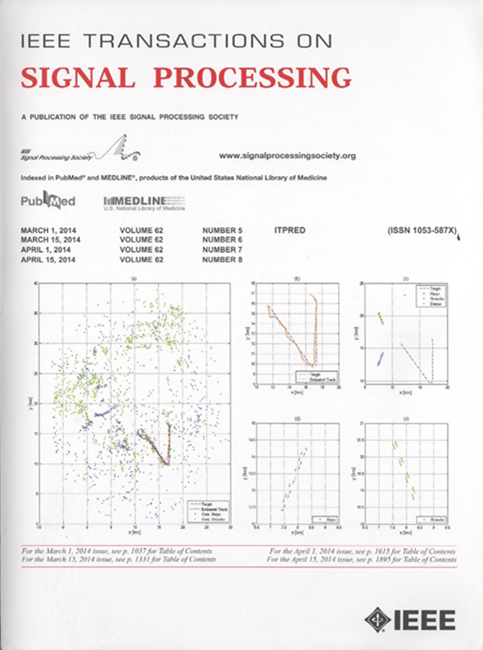Subspace Representation Learning for Sparse Linear Arrays to Localize More Sources Than Sensors: A Deep Learning Methodology
IF 4.6
2区 工程技术
Q1 ENGINEERING, ELECTRICAL & ELECTRONIC
引用次数: 0
Abstract
Localizing more sources than sensors with a sparse linear array (SLA) has long relied on minimizing a distance between two covariance matrices and recent algorithms often utilize semidefinite programming (SDP). Although deep neural network (DNN)-based methods offer new alternatives, they still depend on covariance matrix fitting. In this paper, we develop a novel methodology that estimates the co-array subspaces from a sample covariance for SLAs. Our methodology trains a DNN to learn signal and noise subspace representations that are invariant to the selection of bases. To learn such representations, we propose loss functions that gauge the separation between the desired and the estimated subspace. In particular, we propose losses that measure the length of the shortest path between subspaces viewed on a union of Grassmannians, and prove that it is possible for a DNN to approximate signal subspaces. The computation of learning subspaces of different dimensions is accelerated by a new batch sampling strategy called consistent rank sampling. The methodology is robust to array imperfections due to its geometry-agnostic and data-driven nature. In addition, we propose a fully end-to-end gridless approach that directly learns angles to study the possibility of bypassing subspace methods. Numerical results show that learning such subspace representations is more beneficial than learning covariances or angles. It outperforms conventional SDP-based methods such as the sparse and parametric approach (SPA) and existing DNN-based covariance reconstruction methods for a wide range of signal-to-noise ratios (SNRs), snapshots, and source numbers for both perfect and imperfect arrays.稀疏线性阵列的子空间表示学习以定位比传感器更多的源:一种深度学习方法
使用稀疏线性阵列(SLA)定位比传感器更多的源长期依赖于最小化两个协方差矩阵之间的距离,最近的算法通常使用半确定规划(SDP)。尽管基于深度神经网络(DNN)的方法提供了新的选择,但它们仍然依赖于协方差矩阵拟合。在本文中,我们开发了一种从样本协方差估计sla的共阵子空间的新方法。我们的方法训练DNN来学习信号和噪声子空间表示,这些子空间表示对基的选择是不变的。为了学习这种表示,我们提出了衡量期望子空间和估计子空间之间的分离的损失函数。特别是,我们提出了测量格拉斯曼并集上子空间之间最短路径长度的损失,并证明了DNN可以近似信号子空间。采用一种新的批处理抽样策略,即一致秩抽样,加快了不同维数的学习子空间的计算速度。由于其几何不可知和数据驱动的性质,该方法对阵列缺陷具有鲁棒性。此外,我们提出了一种完全端到端无网格的方法,直接学习角度来研究绕过子空间方法的可能性。数值结果表明,学习这种子空间表示比学习协方差或角度更有利。它优于传统的基于sdp的方法,如稀疏和参数方法(SPA)和现有的基于dnn的协方差重建方法,适用于大范围的信噪比(SNRs)、快照和完美和不完美阵列的源数。
本文章由计算机程序翻译,如有差异,请以英文原文为准。
求助全文
约1分钟内获得全文
求助全文
来源期刊

IEEE Transactions on Signal Processing
工程技术-工程:电子与电气
CiteScore
11.20
自引率
9.30%
发文量
310
审稿时长
3.0 months
期刊介绍:
The IEEE Transactions on Signal Processing covers novel theory, algorithms, performance analyses and applications of techniques for the processing, understanding, learning, retrieval, mining, and extraction of information from signals. The term “signal” includes, among others, audio, video, speech, image, communication, geophysical, sonar, radar, medical and musical signals. Examples of topics of interest include, but are not limited to, information processing and the theory and application of filtering, coding, transmitting, estimating, detecting, analyzing, recognizing, synthesizing, recording, and reproducing signals.
 求助内容:
求助内容: 应助结果提醒方式:
应助结果提醒方式:


